- Administrator
- Albums and Singles
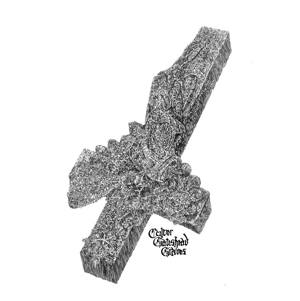 Lee Stokoe has been active for two decades but has maintained a relatively low profile with limited and self released recordings, with his biggest claim to fame having spent time with the legendary Skullflower. Like that band’s head Matthew Bower, Stokoe works heavily with guitars and a legion of guitar pedals, but the result is less raw and aggressive, and more hypnotic and minimalist. Across these two side-long pieces are repeated, meditative drones that seem to lurk just out of view, in a distant fog or mist.
Lee Stokoe has been active for two decades but has maintained a relatively low profile with limited and self released recordings, with his biggest claim to fame having spent time with the legendary Skullflower. Like that band’s head Matthew Bower, Stokoe works heavily with guitars and a legion of guitar pedals, but the result is less raw and aggressive, and more hypnotic and minimalist. Across these two side-long pieces are repeated, meditative drones that seem to lurk just out of view, in a distant fog or mist.
The A side of this LP, "How She Cut Herself," is all deep muffled guitar noise.Surging, slow paced rhythms are there, but out of reach.Via filtering and reverb, he places the source of this racket somewhere in the distance, almost perfectly emulating the sound of a black metal guitar noise squall coming from a garage just down the street.Elements of harsh noise are definitely here in its singular, wall-like approach to sound, but it is never that jarring or oppressive.Throughout its 17-minute duration it hardly changes, and when it does it is mostly due to variations in frequency or equalizer settings being shifted.
On the other side, "An Oath" retains that distant, obscured effect to the sound, but has more variation and diversity throughout.Slowly rising swells of guitar begin the piece, and a wider sonic spectrum is present.Throughout the muffled recording, a multitude of harmonics become prominent amongst the unrelenting walls of noise.Harsher, forceful stabs of feedback pierce through here and there, only to pull away again, as minor variations push the composition toward a tenser, bass heavy conclusion.
Gateshead Graves is definitely not a recording everyone could appreciate.Its staunch minimalism and intentionally repetitive nature are an acquired taste, as is its idiosyncratic production style.However, the change and variation that is underlying makes for fascinating walls of sound that are closer in approach to Vomir or The Rita than a guitar-based project, but even compared to those projects the sound is more dynamic and nuanced, resulting in a difficult, but powerful record.
samples:
 
Read More
- Administrator
- Albums and Singles
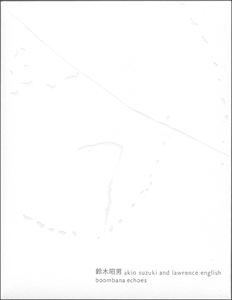 In a spate of recent releases, Room40 label head Lawrence English has produced three very different works on the always beautiful Winds Measure label, with some recorded as far back as a decade. While he utilizes field recordings from Japan and Australia on all three, each one sounds nothing like the other but all are indicative of the Australian artist’s ability at capturing and manipulating familiar sounds into something else entirely.
In a spate of recent releases, Room40 label head Lawrence English has produced three very different works on the always beautiful Winds Measure label, with some recorded as far back as a decade. While he utilizes field recordings from Japan and Australia on all three, each one sounds nothing like the other but all are indicative of the Australian artist’s ability at capturing and manipulating familiar sounds into something else entirely.
Boombana Echoes, a collaboration with Japanese artist Akio Suzuki recorded in 2005, the emphasis is definitely more on instrumentation, both traditional and electronic.Suzuki performs on the Analapos, an instrument of his own creation that consists of two metal cylinders connected with a coil spring."Manorina Melanophrys" showcases this instrument immediately with its scraping, resonating metallic sound, initially jarring and violent, but then becomingmuch more calm, with almost rhythms and light, ethereal electronics finishing the work out.
"Ficus Watkinsiana" stays a bit more dissonant, with a disconcerting voice echoing around immediately setting a darker sensibility.Soon an oddly bent/shaped melody, which almost sounds like a sampled cat meow constructs some semblance of a melody amidst the heavy use of reverb and echo, before ending with a thin percussive blast from English.
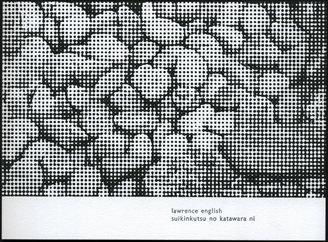
Suikinkutsu No Katawara Ni is a collection of traditional field recordings from English.Recorded between 2003 and 2011, he captures various locations in both Japan and Australia extremely effectively, at times being easily identifiable sources, and other times not at all.A consistent sound that appears throughout a number of the pieces here, especially "Taima Bells" and "Slowly Turns Blue" is a wet, metallic pinging sound likely of dripping water.The former has a rapid, almost frenetic pace to it, while the latter has a calmer, more meditative pacing to it.
The plinking sound appears as a more subtle counterpoint on other pieces, such as the winds and distant birdsongs of "Bamboo Shinjuku" and the dense cicada calls and organic sounds that punctuate "Minor Lori Swings".The resonating metallic hollowness that is "Chamber" is perhaps the most different piece here: the endless reverberations of what sounds like a recording from a metal tank dominating the sound while birds can be heard far in the distance.
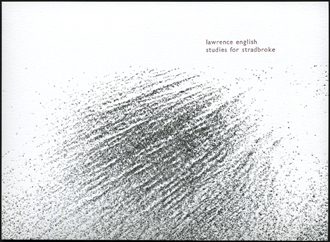
Studies for Stradbroke sees English recording material closer to home, namely via hydrophone on Stradbroke Island in both January and August of 2007, reflecting the two seasonal extremes.The opening and closing versions of "Slide" are the most boisterous of these eight recordings, sounding like wide expanses of silence interrupted by what could be a sped up and slowed down tape of white noise, but most likely not.
Between these two conceptual bookends are a variety of hushed, slight recordings that capture the various textures from under the water."Reeds of Brown Lake," for example, uses the subtle vibrations captured, likely ripples and waves in the water, to build an almost heartbeat like thump that adds a great sense of tension to an otherwise understated piece.
The strongest works here are the ones that present fascinating, but unidentifiable textures and natural rhythms.This is at its most obvious on the quiet clattering that almost sounds like wooden objects on "Intercepted Communications" and the brittle, yet submerged crackles of "Rock Walls," which is occasionally punctuated with a bird call or other natural interruption.In other moments they are used infrequently and amidst long passages of silence, such as on the occasional sloshing of "Slipping Grains."
All three of these releases stand strongly on their own, but I must say my personal preference leans towards Studies for Stradbroke.Even amidst its limited source material, Lawrence English captures a sonic microcosm of low frequency pulses and wet, crackling sounds that are far from being easily identified.Boombana Echoes is also notable for its significantly different approach, using more traditional techniques to create a very unique, almost musical EP of sound art.Suikinkutsu No Katawara Ni is not bad by any means, but its traditionalist approach to field recordings causes it to stand out less next to these other two very diverse works.
samples:
 
 
Read More
- Administrator
- Albums and Singles
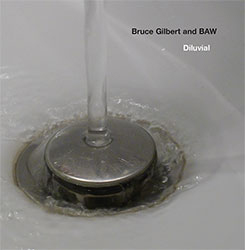 Gilbert has not been a prolific solo artist even after departing from Wire, but whenever he has released new material, it has been of the utmost quality, and this record is no different. A concept album on global warming and floods in collaboration with Beaconsfield Art Works (David Crawforth and Naomi Siderfin) is no different. Mixing treated field recordings and electronic instrumentation, Diluvial is another high water mark in his impressive discography.
Gilbert has not been a prolific solo artist even after departing from Wire, but whenever he has released new material, it has been of the utmost quality, and this record is no different. A concept album on global warming and floods in collaboration with Beaconsfield Art Works (David Crawforth and Naomi Siderfin) is no different. Mixing treated field recordings and electronic instrumentation, Diluvial is another high water mark in his impressive discography.
On pieces such as "The Void," the field recordings are either processed beyond recognition or are entirely absent, as the focus is on melodic drones that have a distinctly mournful mood them.Bits of static and interference come through but on the whole it is a subtle composition of understated melody and beauty."Lights" has a similarly electronic approach, mixing dark low frequency tones with ring modulated noises and crackling static.Even when the more dissonant elements take over in the second half, it always shows admirable restraint.In Esse this most certainly is not.
The natural recordings do appear clearly on "The Expanse," in the form of hollow, metallic rainfall that follows aquatic sounding oscillator passages.The closing half of the 12 minute composition is especially gentle, capturing just the most subtle sounds of water that are almost inaudible.The exact opposite atmosphereis drawn on "Dry Land," in which what could be arid desert winds are paired with subtle clicks and vibrations, and perfectly matching the imagery of the title.
"Beasts of the Earth" also goes for the literal interpretation of its name, with both recorded nature and synth derived insects swarming, as is the use of actual and virtual bird calls on "Creatures of Sea and Air."Like "The Void," "Rest/Reflection" also drops the field recordings to focus on depressive, echoing electronics that perfectly channel darkness and disaster without succumbing to cliché tactics.
The aforementioned "Rest/Reflection" ends Diluvial on a perfect note, as that final composition has the ideal balance of tension and pensiveness.Gilbert, Crawforth and Siderfin manage to capture a significant number of themes, both historic and modern, throughout this album. Creation myths and social advocacy aside, the music contained here stands on its own and serves as a reminder just how brilliant Bruce Gilbert is as an artist, and that his genius has shown no signs of reduction as time passes.
samples:
 
Read More
- Administrator
- Albums and Singles
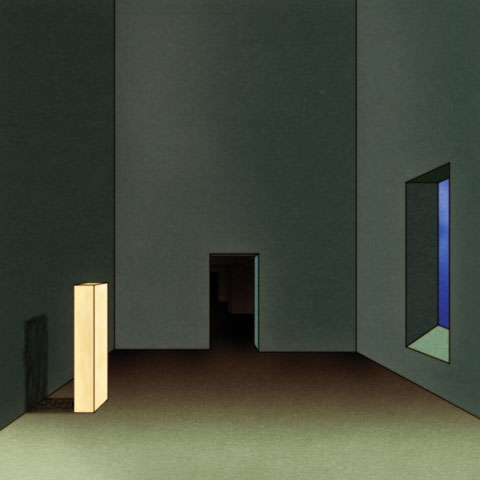 Much of Daniel Lopatin's work has been characterized by uncertainty. Even in his best moments, there was a hesitance, an aversion to commitment which staggered the fluidity of his material. In his initial presentations of synth arpeggios, there was the voice of a burgeoning artist struggling to move past process, to bridge the gap between idea and execution, to make a full measure. On R Plus Seven, Lopatin has fully realized this goal. Filled with a stupefying sureness, this record once again finds Daniel reinventing his style from the ground up, combining the dated provinces of new age music, soundtracks, and corporate ambience into something tremendous.
Much of Daniel Lopatin's work has been characterized by uncertainty. Even in his best moments, there was a hesitance, an aversion to commitment which staggered the fluidity of his material. In his initial presentations of synth arpeggios, there was the voice of a burgeoning artist struggling to move past process, to bridge the gap between idea and execution, to make a full measure. On R Plus Seven, Lopatin has fully realized this goal. Filled with a stupefying sureness, this record once again finds Daniel reinventing his style from the ground up, combining the dated provinces of new age music, soundtracks, and corporate ambience into something tremendous.
There are plenty of critical approaches to Oneohtrix Point Never's music, but they are rarely as interesting as the music itself. I might find a keen satire of zealous consumerism in his use of stock choir pads and chintzy muzak pianos, a laughing mockup of music from the soulless recesses of the dot-com bubble. Or, barring that exhausted approach, I could argue for an embrace of the kind of surreal futurism new age music had promised, a genuine appreciation for the art of unfettered idealism. But R Plus Seven really ought to be examined for the music alone—the innate beauty of the record upon first listen. I am instantaneously able to understand the order and chaos in the universe Lopatin has built with R Plus Seven. It is an experimental release by most standards but it is also strangely, undeniably pop.
In speaking on his creative process, Daniel Lopatin seems to entertain ideas of irreverence and simultaneously a strict working order. In minutiae, it is the former; R Plus Seven lives as a series of variables, finicky and fleeting, a compendium of far-flung, seemingly irrelevant detritus. Sudden bursts of inspiration jut in and out, and the best melodies never last long enough. There is a very direct attempt at reworking each song on this album into a frail and fractured thing; each time an order seems to be established, there will be a transition into choral drone or a sudden glottal stop that cuts it short of its inevitable crescendo, breaking it apart into fragments. But in a larger picture these pieces are the most structured work he has ever done. It is a difficult effort to find commonality between disparate pieces, but each song on this release shares a (sometimes subconscious) fraternity. The piecemeal construction makes a huge logical leap in what normally comprises a song, but in taking that leap it opens up a whole new approach to Lopatin's craft. I find myself listening to the record over and over again, bent on discovering those patterns and links with giddy bemusement. It is a triumph of function over form, and as a result the form becomes the new normal.
"Boring Angel" opens the album with a solemn drone, a jittery triplet of voices, a sudden dropout into silence, and a nonsequitur church organ. The sampled choir, a defining instrument of the album, is the most accessible entry point to this album but eventually becomes the most alienating. I have not heard something so deeply nestled in the uncanny valley in a long while, nor as purely fun. Following that is the spectacular "Americans," with its smeared microsamples and anxious clutter giving way to jubilant polyrhythmic percussion and a major key gear shift in the final minute. "Zebra" is possibly my favorite song off the record, an electrifying upbeat staccato synth pulse rolling along in conjunction with a human choir made android by granular time stretching. It then collapses, as if following the unwritten motions of a choreographed dance, before settling into a quiet peace in its latter half.
There are too many perfect bits to mention in this review, despite my want to include all of them. Among the best small wonders: the "wait" signifying the slowing of "Problem Areas'" clanging metal loops, the swung shaker beat on "Cryo" that I just cannot quite pin down, and the completely phantasmagorical climax of "Still Life," made all the more unnerving by its accompanying video, a Jon Rafman-directed spectacle of fetish horror and gratuitous digital flesh. There is a moment in "Chrome Country" where all other noise drops out and a solitary choir voice freezes in place, and I am stuck in time with it. It is at once coldly mechanical, like a program running out of memory, and warmly cathartic, human as a strained voice pushed past its physical limits. In essence, this is R Plus Seven's modus operandi: the natural/unnatural dichotomy, finding human qualities in mechanical sounds, and how well Daniel Lopatin manages to accomplish that feat.
I think the strongest praise to be said for R Plus Seven is that for all its cuts and edits, all its obtuse conceptual ambling and strangeness, it is a fully realized piece of music. In Replica, I could spot the moments where a stronger choice might have been made or a punch had been pulled. Likewise, Lopatin's early work on Rifts and thereabout was very much a fluid, improvise-then-edit kind of gradual product. R Plus Seven is immaculate; I cannot spot a piece that can be moved without ruining the puzzle. Lopatin has found an inspired path, happier and braver, run amok with grand ideas, and imbued with explosive potency. Outstanding, fantastic stuff.
Samples:
Read More
- Administrator
- Albums and Singles
 This Chicago band’s career trajectory has been a singularly impressive and curious one, as they have somehow managed to continually reinvent their sound while still getting exponentially better with each new album.  Era makes that trend seem even more remarkable, as Disappears have made yet another huge leap forward despite tampering with what was arguably their best feature (Brian Case's dissolute-sounding, deadpan vocals) and losing drummer Steve Shelley to Lee Ranaldo's new band. As it turns out, neither are missed, as the band more than compensate by paring their aesthetic down to pummeling, machine-like precision mingled with great hooks and well-placed eruptions of chaos.
This Chicago band’s career trajectory has been a singularly impressive and curious one, as they have somehow managed to continually reinvent their sound while still getting exponentially better with each new album.  Era makes that trend seem even more remarkable, as Disappears have made yet another huge leap forward despite tampering with what was arguably their best feature (Brian Case's dissolute-sounding, deadpan vocals) and losing drummer Steve Shelley to Lee Ranaldo's new band. As it turns out, neither are missed, as the band more than compensate by paring their aesthetic down to pummeling, machine-like precision mingled with great hooks and well-placed eruptions of chaos.
The first time I put this album on, the opening "Girl" made me nearly jump out of my skin, as its transition from a clean, unadorned bass riff to full-on rock fury could not have been more abrupt or unexpected. As far as songcraft goes, it is far from the album's best moment, but its collision of drum solo, guitar squall, and obsessively repeating, heavily processed vocals achieves quite an impressive amount of brute force while staying grounded enough by its bass line to feel like a groove.  It is no small feat to sound explosive for the entire duration of a four-minute song, but Disappears somehow did it.  Presumably exhausted afterward, the band settles down noticeably for next six songs, but a few core motifs from "Girl" stick around for the duration, namely the use of guitars as a textural tool (rather than a melodic one) and Brian Case's surprisingly effective tendency to endlessly repeat brief phrases (and slather his vocals with effects).
The following "Power" is a bit of a mixed bag, as it finds Case regressing a bit into his former GVSB/Mark E. Smith-esque vocal affectations, but he certainly sounds cool doing it and it is probably the album's strongest choice for a single, mixing a darkly sexy groove, subtly snarling wah-wah, and quite a bit of laconic, syllabically enhanced charisma.  The album's other two stabs at fairly straightforward rock ("Era" and "Weird House") do not quite hit the same heights, but "Weird House" does offer some appealing unhinged vocals and some neat guitar sounds.  Fortunately, the remaining songs are all great enough to compensate for any comparative lulls the album might have.  The least of them, "Elite Typical," is a bit of a throwback to early Gang of Four/Pop Group-style post-punk (which I am the target demographic for), but the other two are a bit more unique (and both are also inarguable career highlights).
Due to both its length (9:30) and sheer greatness, it is hard to see "Ultra" as anything other than the album's centerpiece and crowning achievement.  It certainly has a lot going for it, as it combines an alternately stomping and stuttering beat with some kind of machine sample, loads of elegantly restrained guitar abuse, and some of Case's most cryptically menacing vocals (centered around an echo-heavy deadpan mantra of "If you go, I'll go").  Of course, it is the execution that matters most and that is where Disappears shine brightest, particularly the rhythm section: the groove is insistent, yet constantly shifting, maintaining a strong tension without ever quite offering any kind of relief or catharsis.  Also, in a broader sense, "Ultra" could only be a Disappears song, a significant achievement for such a historically chameleonic band, particularly since they manage to sound unique through restraint and understatement (no real choruses, no real melodies, no real riffs).
That said, my favorite song of all is the closing "New House," which has stayed stuck in my head for weeks now.  Much like "Ultra," it is built upon little more than a subdued drum part (just toms and a high-hat) and a looping bit of machine-noise, but it is even more sparse this time around and Case's vocals are even more brilliantly creepy and echoing.  I cannot think of many people besides Brian Case who can endlessly repeat a phrase like "a new house in a new town" until it sounds like nothing less than the ghoulish musings of a man with a backyard filled with dead prostitutes (I also happen to be target demographic for ghoulish musings).
Era is truly a landmark album for this formidable foursome–everything has finally come together.  While it is not quite perfect from start to finish, it may as well be.  It is hard imagine any way that its best parts could have been any better: it is basically a master class in how to sound amazing, as Disappears prove that all you need is a strong rhythm section, some good ideas, enough space for those ideas to make an impact, and enough time to strip away anything that detracts at all from overall badassness.  Equally importantly, Era is both the first Disappears album that I can happily listen to in its entirety and the first album where there are some brilliant songs that sound distinctly like Disappears and not like Disappears skillfully channeling one of their many influences (I am almost certain that I will be dismissing new bands as "too derivative of Disappears" within the next couple of years).  This is going to be all over "best of 2013" lists in a couple months.
 
Read More
- Administrator
- Albums and Singles
Jason Kahn
"Things Fall Apart"
Herbal International 1302 CD
http://herbalinternational.blogspot.ch
Jason Kahn: drum set, voice, metal objects, radio, mixing board, contact microphones,
magnetic coil, speaker, computer, chairs, plastic bags
1. Catcher 5.03
2. Im Raum 2.01
3. Dreaming Of 3.36
4. Message For 4.24
5. We Fall 2.51
6. Mornings 5.45
7. Split Hum 5.22
8. Calling 3.27
9. Semblance 2.22
10. An Arc 2.26
11. Wait 1.52
12. Speaker 13 4.06
13. Last Drum 5.55
14. Night 3.47
Recorded in Kunstraum Walcheturm, Zurich, Switzerland on April 14, 2013.
Mixed and mastered May 2-31, 2013.
Cover art and liner notes Jason Kahn.
Contact:
Jason Kahn
http://jasonkahn.net
Back in 1981 I was studying at the University of London in the School of African and Asian Studies. One lecturer had us read Chinua Achebe's novel "Things Fall Apart." Aside from the book moving me immensely, the title stuck with me all this time. And for the past couple of years I've been turning these words over in my mind, as they seemed to speak so much about what is falling apart around us, in terms of social structures, economies, the environment, even whole nations.
Often when I start thinking about a new work I begin with a title. The sound of the words or their meaning give me a sense of direction to work in. Chinua Achebe died in March this year, and perhaps his passing prompted me to finally get working on this CD. But though I felt these words spoke to me, I still couldn't get a grasp on what they were saying.
The novel "Things Fall Apart" deals with the imposition of British colonial rule over a region in Nigeria and the eventual demise of that society, where, quite literally, everything that bound the indigenous populations together through religion, culture and family falls apart. For me, though, I wanted to apply the words "things fall apart" to a way of working, or, perhaps more accurately, not working. What happens when our preconceived notions, all our carefully laid-out plans, even the place we choose to work, fall apart? When in the moment it seems we have finally begun only to find that we have to start over again, forget all our clever ideas and re-think from that moment on to the next? When things falling apart becomes the creative process in itself and this lack of cohesion offers the clearest path to discovering something new?
This was the situation which faced me when I arrived at the Kunstraum Walcheturm to start recording. The Kunstraum Walcheturm is an art space located in the center of Zurich, not far from the main train station. The building itself belongs to a former Swiss army barrack, built around a large courtyard spreading out in front of the Kunstraum Walcheturm, which used to house the army's stables. The room I recorded in is large: 320 square meters with with a 3.80 meter high ceiling. Both floor and ceiling are of wood, giving the room very warm acoustics, aside from the fact that the floor creaks tremendously when one walks over it! I've performed many times in this room, heard many concerts there and know its sound very well--or at least I thought I did.
A few years ago I used the room to record two pieces for the cassette "Walcheturm" on the Banned Production label. At that time, though I was attracted to the sound of the room, I think my primary concern was to just have a quiet place to record in. Patrick Huber, the director of the space, recently offered it to me again during a pause in his production schedule. In fact, only a very short pause of one day. So I took this as an opportunity, with what I thought were all my ideas ready to realize.
Arriving the evening before to set up my instruments and recording gear, everything was quiet. For once, the adjoining restaurant didn't have a disco going or some boisterous event. The sounds of the city barely registered from outside. Unfortunately, it was late and I was too tired to start recording. I decided to return in the morning and get an early start.
When I arrived the next day, the first thing I noticed was the many horse-drawn wagons parked directly in front of the Kunstraum Walcheturm and all around the courtyard. Zurich's annual Sechselaeuten parade was about to start in a few hours and the courtyard provided a convenient place to park the horses and wagons until the parade got rolling. The jingling of all the horses' bells and their insistent neighing and whinnying filled not only the courtyard but the inside of the Kunstraum Walcheturm as well. Obviously, there was no way I could start recording now. Instead, I decided to walk around and make recordings of the ambiance there, hoping I might use this for the CD. I'd originally been thinking of just using this day recording as a means of collecting material to compose with later. The idea of recording complete pieces direct and unedited wasn't on my agenda at this point.
I finished recording and went to grab a coffee. When I returned, the horses and wagons were gone but now a huge wedding pary was slowing filing into the restaurant next door. And this wasn't just any wedding party, but a Tamil wedding party, complete with a band and what looked like at least a couple hundred guests! It seemed now that things were truly falling apart for me, as when this party got going I would surely not be able to record anything except maybe the party itself. But, amazingly, the party wasn't that loud and deep in the recesses of the Kunstraum Walcheturm's main room I was able to start working.
Walking around the room alone now I slowly felt how the acoustics of the space and the sensation of being there cast something akin to a spell over me. The idea of just collecting a bunch of material to work with later now seemed completely irrelevant. I decided that I wanted to work with the room, activating the space with my sounds and in turn letting the space activate me with its atmosphere and acoustical possibilities. The pieces on this CD were recorded "as is," which is to say I didn't re-work them. Just some basic equalization and editing off the empty space before and after each pi ece's beginning and end. None of these pieces were planned, which doesn't mean "improvised" (though they were) but that in most cases I really didn't have any preconception of what I wanted to do over the course of the day, instead letting my intuition and the room itself guide me from one piece to the next. The idea of working with my voice really only occurred to me as the experience of spending so many hours in the space began to grow on me. I felt prompted to use my voice, that the space practically demanded this from me. When the party next door finally dispersed later in the evening, I was left with a very silent space--which made it possible to do some of the quieter takes on the CD. The piece "Night" was the last piece I recorded that day.
So, yes, in the end many things fell apart here: the actual feasibility of the recording space, my ideas for working--even to the point that I tried approaches which I'd never pursued before. Much fell apart but in the end this collection of pieces miraculously came together.
Read More
- Administrator
- Albums and Singles
 With Gates of Atlantis, Phelios (the solo project of Martin Stürtzer) has created a soundtrack in search of a film. It has a distinctly cinematic tone and structure to it, and even follows a loose narrative structure. However, there is far more than incidental sounds and music cues here, and it simply is too complex and varied to function with any other media.
With Gates of Atlantis, Phelios (the solo project of Martin Stürtzer) has created a soundtrack in search of a film. It has a distinctly cinematic tone and structure to it, and even follows a loose narrative structure. However, there is far more than incidental sounds and music cues here, and it simply is too complex and varied to function with any other media.
The opening title piece does exemplify this film-like structure right off the bat.Liberal applications of reverb and plucked synth strings set the stage before oppressive, dramatic crashes herald the arrival of monolithic kettle drums and intense dramatic flair.Intentional or not, it makes for perfect opening title credit music in its sound and bombast.Similarly, the closing "Ascension" both exemplifies its title and an uplifting ending to an apocalyptic narrative.Lighter synths abound, and when darker moments show up they are quickly battled away.
Between these two exceptional mood-setting moments, there exists a combination of both dynamic oriented grandiose compositions and more restrained, moody ones that keep things flowing for the album’s duration."Spiritual Possession" takes the connotations of its title literally, beginning with what sounds like a distant open door banging from the wind(or other forces) and bleak ambience.Things soon come to a head, with banging ritualistic percussion and what almost sounds like a fuzzed laden guitar squall that comes to a climax, and then ends peacefully.
Other moments are scaled back and understated."Temple of Yith" is all murky synthesizers and bass heavy rumbles that are the very definition of dark.A slow progression of noise and distortion comes and goes, but never does it become too aggressive. "New Stellar Age" is cut from a similar cloth in both its sound and mood.Again keeping the drums away, it opens in a subtler, haunting way as the surging keyboards build tension in a slow burn development.
Phelios may be one of many in the nebulous subgenres of dark ambient and death industrial, but his guile at composition puts him head and shoulders past most of his contemporaries.Not too many albums manage to capture such intense moods and conjure such powerful imagery based upon its sound alone (even though the packaging is rather Spartan, it has its own movie-like presentation).Gates of Atlantis is clearly a high water mark for the current state of the genre.
samples:
 
Read More
- Administrator
- Albums and Singles
 Robert Piotrowicz's LP from earlier this year, When Snakeboy is Dying, found the Polish composer stepping out of his comfort zone and working with a variety of traditional instruments with exceptional results. Lincoln Sea, however, sees him going back to his modular synthesizer array that has appeared on so many of his records. But rather than the chaos and noise that previous work was based, the sense of structure and composition here is significantly deeper and manages to touch upon rock and orchestral approaches.
Robert Piotrowicz's LP from earlier this year, When Snakeboy is Dying, found the Polish composer stepping out of his comfort zone and working with a variety of traditional instruments with exceptional results. Lincoln Sea, however, sees him going back to his modular synthesizer array that has appeared on so many of his records. But rather than the chaos and noise that previous work was based, the sense of structure and composition here is significantly deeper and manages to touch upon rock and orchestral approaches.
Piotrowicz's return to the world of oscillators and patch cables is obvious the second the first side begins with its sustained, just slightly off kilter tones and electronics that lean more into the upper end of the sonic spectrum.Even though at first the sound seems static, ever so subtle variations are present, as are some understated low frequency undertones.Soon it begins to change and evolve:multilayered sounds build upon each other into a stuttering, disjointed mass.
As it builds in intensity and seems to teeter into dissonance, a churning mass of carefully structured, organized sound rises up and then slows everything down with a more moody, disconnected sensibility to it. As the piece reassembles itself from sharp shards of electronic squall, a rhythmic bass line and pulse like a kick drum become prominent.The conclusion sees these rhythmic elements mixing with the intense electronics to sound like an alien take on hard rock structures, and approximates it quite well.
The second half of the album is slower, but more erratic.Frosty waves of electronics rise and fall and, while not exactly harsh, are uncomfortable with their slightly detuned sound.Aggressive bursts of oscillator add to this instability until things drift into more depressive, reserved territories.The synths become elongated and stretched into almost string-like passages, and with the dramatic surges and hits that arrive it sounds like a full synthetic orchestra being expertly conducted.
While conceptually Piotrowicz excels in his recontextualization of stereotypical modular synthesizer sounds, Lincoln Sea is an album that is riddled with unique and diverse sounds and effects.The two-part composition manages to take a multitude of directions as it builds to these stylistic crescendos, and the full package makes for another brilliant release in his ever growing discography.
samples:
 
Read More
- Administrator
- Albums and Singles
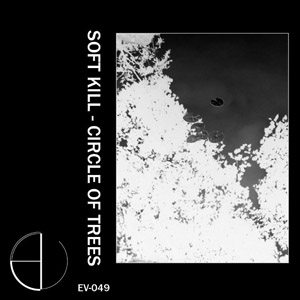 A side project of members of Blessure Grave, Soft Kill does bear a resemblance, but one that focuses less on the folk tinged sound of that band and instead emphasizes the more post-punk elements. In some ways, Circle of Trees is a step backwards from their debut An Open Door: The live drums are replaced by a rigid machine and the overall production seems a bit more sparse, but it also gives the record a distinct sound, and along with it a few more uptempo moments than others in their catalog.
A side project of members of Blessure Grave, Soft Kill does bear a resemblance, but one that focuses less on the folk tinged sound of that band and instead emphasizes the more post-punk elements. In some ways, Circle of Trees is a step backwards from their debut An Open Door: The live drums are replaced by a rigid machine and the overall production seems a bit more sparse, but it also gives the record a distinct sound, and along with it a few more uptempo moments than others in their catalog.
Electric Voice, Handmade Birds
For the most part, all of the SK releases I have heard could have been recorded in 1981 and I would not know the difference, and I mean that in the most complimentary way.The dense, yet sharp production that bakes everything in tasteful reverb and gives each drum hit a razor sharp punch feels spiritually derived from Martin Hannett's classic productions in a beautiful way way.
Unlike other artists who are revisiting of this era of music, there is not the same desperate clinging to intense minimalism that all the various "-wave" subgenres are so enmeshed in.Like the best post-punk records, there is a definite sparseness to be heard, but here it works perfectly, like the stiff rhythm and serpentine guitar of "Lost" that obscure the distant, monotone vocals.
The synth heavy "Untitled," complete with electronic drums and theatrical vocals, comes across like Movement-era New Order with a more histrionic singer.Similarly, the intentionally stiff machines of "Vacant Home" definitely sound more 1980s than most of the material on this album, but in a beautifully endearing way, and the song manages to build in intensity as it goes on.
The most drastic variations on here are "Circle of Trees" and "Nine Years," both of which feature uncharacteristically jangly acoustic guitar sounds amidst the other instrumentation.Both because of this and an overall different approach to the songwriting, the result a clearly more up-tempo and lighter feel here, in a way that fits wonderfully.

The album was preceded chronically with a 7" on Handmade Birds that acts nicely as a bridge between the more guitar focused An Open Door and the keyboard heavy Circle of Trees."Current" focuses on a chiming, simple but effective guitar melodies, textural synths, and live drumming in place of a machine that straddles the two full length releases well.
On the flip side, "Seven Hundred" is another faster paced song, but with an appropriate amount of bleakness still present.Slower to develop, but richer because of the extra time, a rudimentary analog synth and echoing guitar is propelled along with a slowly rising rhythm that eventually locks in to a rapid pace. With the pacing and variation of Head on the Door-era Cure but the stripped down instrumentation and mood of Joy Division circa Unknown Pleasures, it is a perfect combination.
It is always hard to evaluate music that is so obviously a tribute to a specific era and genre, but Soft Kill manage to lock on to the timeless elements that formed the foundation of the best post punk records.Like early Factory releases and the proto-goth standard bearers of the early 1980s, it does not sound so specifically rooted in a certain time period as it could have.Someone with no knowledge of SK's influences could hear these records and place them accurately as being recorded within the past few years, but those with a deeper background will surely feel the appropriate tinges of nostalgia.
samples:
 
Read More
- Administrator
- Albums and Singles
 Staalplaat's latest pair of excavations from Muslimgauze's supernaturally bottomless vault is a bit of a surprise, as these two albums contain some of the best material to surface from the departed Bryn Jones in a very long time.  While a good portion of Tandoor Dog has admittedly appeared before, it was only as part of an extremely limited 4LP set that virtually no one has, while Izlamic Songs is an entirely unreleased, fully formed, and coherent album.  To my ears, Izlamic Songs is probably the better of the two (it has higher peaks, at least), but both intermittently capture Jones at the peak of his aberrant and bludgeoningly percussive dub genius.
Staalplaat's latest pair of excavations from Muslimgauze's supernaturally bottomless vault is a bit of a surprise, as these two albums contain some of the best material to surface from the departed Bryn Jones in a very long time.  While a good portion of Tandoor Dog has admittedly appeared before, it was only as part of an extremely limited 4LP set that virtually no one has, while Izlamic Songs is an entirely unreleased, fully formed, and coherent album.  To my ears, Izlamic Songs is probably the better of the two (it has higher peaks, at least), but both intermittently capture Jones at the peak of his aberrant and bludgeoningly percussive dub genius.
Izlamic Songs opens in spectacular, "instant classic" fashion with "I Will Sing Until My Land Is Free," unfolding a vocal  lengthy vocal sample over a very heavy percussion and tambourine loop augmented with ominous buzzing swells and deep bass rumble.  The four other "real" songs left in its wake do not have quite the same bulldozing intensity, lamentably, but the basic building blocks remain the same: I think this album could reasonably characterized as atypically "collage-y" and textural.  It is certainly a very rhythmic release ("Tourist Vice Hole" is built almost entire upon clattering hand drums, for example), yet the emphasis seems to be much more on tweaking vocal and string loops rather than on the groove.  In fact, the sole brazenly groove-y addition seems to be that each song features a simple bass loop that is so deep and overloaded that the actual notes being played are meaningless–the bass exists almost entirely as a forceful physical presence.
Of course, the fact that Izlamic Songs is so sparse on conventional music does not mean that Jones was lazy.  Rather, Jones channeled his formidable energy into the studio, turning his well-chosen loops into vibrant pulsing soundscapes that unpredictably pan, stutter, drop-out, and echo.  Bryn also seems to have been very fixated on reversing samples during this period, as surreal backwards and possibly pitch-shifted loops play dominant roles in a number of pieces.  In fact, it seems like Jones either set out to make an album of hallucinatory psychedelia that somehow derailed along the way or that he succeeded, but did it in a way that is distinctly his own.  I am leaning towards the latter, as the omnipresent clattering clip-clop of the tablas mingled with the mammoth buzzing bass created a heavy and appealing bed that allowed Bryn to be as experimental as wanted in all other respects.  Just in case that was not enough, however, Jones also included a surprisingly effective smattering of hooks throughout the album, the best of which is the twanging string snippet in "Sahara Head Dress" (a motif that also periodically stutters and reverses, in keeping with the surrounding music's obsessive themes).
The first five songs are just the prelude to a more substantial trip down the rabbit hole though: the album's final three songs are remixes of music by Systemwide and Jones drops just about every pretense of striving for song-craft or listenability.  Only the first one is particularly substantial (it is over 8 minutes long), but all are quite nakedly and aggressively experimental.  For most of its duration, "Systemwide Virus Abuse 1" plays like a dystopian future twist on the album's earlier aesthetic: a lazy beat unfolds beneath an all-consuming thick buzzing electro bass pulse that buries everything, yet constantly falls prey to glitch-like cut-outs and manglings.  Then it all abruptly turns into a drum loop accompanied by fluttering electronic chaos, vocal loops chopped into oblivion, and a lot of disorienting echo-abuse.  The remaining two bits of "Virus Abuse" offer up escalating craziness coupled with dramatically shortened running times, at times resembling a recording of an over-caffeinated tabla and candy-colored synth frenzy being eaten by a tape player, while at other times approximating "the sound of a drone crashing" (as Jones topically wrote on the tape almost 20 years ago).
I would not necessarily describe any of the remixes as "great," as they are all either too short or too baffling constructed to succeed as self-contained songs, but such an aggressively deranged ending is somehow exactly what the album needed.  I am not sure if it was Jones' idea or Staalplaat's, but I am a huge fan of the sequencing tactic of closing the album with a plunge into deep experimental waters–it makes for a much more strange and memorable effort and the impact of the coherent songs beforehand is not diluted by a series of very similar regurgitations (a typical Muslimgauze crime).  I have absolutely no idea how this album managed to languish in the vault for so long, given the steady flow of half-baked and redundant material that has already surfaced, but I very happy that it eventually found its way out.  Albums like this are why people are still excited about Muslimgauze.
 

Tandoor Dog, for its part, has a very interesting aesthetic that took me a little longer to warm to, as it is essentially a variation on the "hip-hop" Muslimgauze era (not my favorite time).  Fortunately, it happens to be a fairly weird and unhinged variation, which are traits that are always very much to my liking.  Opener "Aurum Franc Insense Ul Myrrh" sets the album's recurring themes in motion nicely: a laid-back breakbeat groove, an incredibly dense and insistent bassline, stuttering stops and starts, and swarming static-y and mangled samples.  Unlike some of the other extremely beat-driven material that has surfaced, it legitimately sounds like Bryn put some serious work into these pieces long after he had his grooves laid down, as the beats and samples are constantly, vibrantly morphing and changing in texture and dynamic.  Also, Jones' requisite Arab-world samples are atypically snarling and harshly manipulated.
For a while, the sole twist on the formula is that a few songs feature mid-tempo Arabic percussion grooves rather than midtempo breakbeat ones.  Within those narrow stylistic confines, however, Jones found a lot of appealing twists and hooks.  For example, "Under the Burka" sounds like Muslimgauze channeling early Aphex Twin, combining buzzing electro-bass and a queasily dissonant, see-sawing motif that mesmerizingly repeats obsessively.  Also, everything simply sounds great: the clattering drums often have a sharp clarity and Bryn went positively bass crazy, enhancing these songs with a thick, pulsing, neighborhood-rattling physicality.  If there are any Muslimgauze fans out there who just installed totally sick woofers in their Camaro, this is probably exactly what they have been waiting for.
As with Izlamic Songs, things take a sharp detour at the end of the album though, which also happens to be where Tandoor Dog starts to extend beyond the 8 songs originally included in 1997's Tandoori Dog box set.  The first divergence is not particularly promising, as "Damascus" is essentially a cannibalized and extended version of Dar Es Salaam's "El-Dar-El-Beida" that clocks in at a too-long 13:11.  However, the final two pieces ("Noor et Hussein Pt. 1 & Pt. 2") seem take that same raw material and reprise it in a slower, pitch-shifted way that is extremely effective.
Both pieces are relentlessly, punishingly obsessive in their repetition, but also extremely hypnotic.  Also, they are not at all boring (to me, at least), as Jones unpredictably disrupts their insistent throb with violent slashes and stutters of static and crackle.  Both resemble a menacingly inhuman locked groove that is jarringly deteriorating or being ripped apart by a wild animal.  It is entirely possible that I am the only one around that finds that particular aesthetic appealing, but I am thrilled that Staalplaat decided to include such a wildly indulgent and bizarre ending–such a gamble is vastly preferable to any possible alternatives that I can think of.  Also, it makes for a very strong  and focused ending to a surprisingly strong and focused album.
 
Read More
- Administrator
- Albums and Singles
A raw live recording from earlier this year, Chalaque's main man Nick Mitchell performs here with Eric Hardiman (Century Plants, Rambutan et. al.) on bass and Pascal Nichols on drums. Essentially a live on stage improvisation, the trio bounce off each other perfectly and manages to grasp that tenuous balance between experimentalism and pure unadulterated rock and roll.
Consisting of two side-long pieces that are each made up of numerous, interlocking improvisations, there definitely a roughness to this recording, which captures crowd noise and is occasionally a bit overloaded by the intensity of the sound. This is not overly surprising, given that it is based on a hand-held recorder in the venue, but it also gives a primal, intense edge to the music that helps far more than it hurts it.
The lead off of "Simple Mathematics" focuses on Mitchell's rapid, noodling solos that manage to just be the right kind of sloppy, as Hardiman's overdriven bass and Nichol’s sharp, ragged drums propels everything along rapidly. With its changing paces and shifting focuses, with the guitar going into sludgy, noise territory and the bass picking up the melodic slack, it does get a certain jam session vibe to it. Thankfully, the improvisations feel much more like early King Crimson than modern Phish.
On the flip side, things are a little looser and more experimental feeling as a whole. The overdriven bass and clattering drum solos that introduce "Toeing the Water of a Cinematic Absence" make this apparent right from the start. Eventually the rapid drums and basic, but powerful bass line come together and restrain the guitar somewhat, even with its wah-wah heavy leads threatening to go off on their own tangents. About a third of the way through the whole song seems to falls apart into a lumbering mass of ramshackle drums and feedbacking guitar. Slowly, but surely, the trio reshape this chaos into a powerful wall of hard driving psychedelic rock that would make Hawkwind jealous.
With its lo-fi recording and improvisational nature, Sounds From the Other Ideology has a clearly wild, chaotic quality to it that gives it a sense of immediacy and intensity. Never does it sound directionless or self indulgent, as can often happen in performances of this nature, it instead uses the sonic warts and technical limitations to its best advantage. When things get messy, it is glorious, but things never go to far out of hand, and the group always manages to reign things in brilliantly.
samples:
Read More

